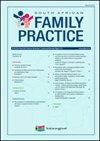Management of neonates with respiratory distress syndrome in resource-limited settings
IF 1.2
Q2 MEDICINE, GENERAL & INTERNAL
引用次数: 0
Abstract
In South Africa, prematurity stands as one of the foremost causes of neonatal mortality. A significant proportion of these deaths occur because of respiratory distress syndrome of prematurity. The implementation of non-invasive respiratory support, such as continuous positive airway pressure (CPAP), has demonstrated both safety and efficacy in reducing mortality rates and decreasing the need for mechanical ventilation. Given the absence of blood gas analysers and limited radiological services in many district hospitals, the severity of respiratory distress is often assessed through observation of the infant’s work of breathing and the utilisation of bedside scoring systems. Based on the work of breathing, non-invasive therapy can be commenced timeously. While evidence supporting the use of high-flow nasal cannula as a primary treatment for respiratory distress syndrome remains limited, it may be considered as an alternative, provided that CPAP machines are available. The purpose of this article is to advocate the use of non-invasive therapy in low resource-limited settings and describe the indications, contraindications, complications, and application of CPAP therapy. This would benefit healthcare workers, especially in low-care settings and district hospitals.在资源有限的环境中管理患有呼吸窘迫综合征的新生儿
在南非,早产是新生儿死亡的主要原因之一。其中很大一部分死亡原因是早产儿呼吸窘迫综合征。持续气道正压(CPAP)等非侵入性呼吸支持的实施已证明在降低死亡率和减少机械通气需求方面既安全又有效。由于许多地区医院没有血气分析仪,放射服务也有限,因此通常通过观察婴儿的呼吸功和使用床旁评分系统来评估呼吸窘迫的严重程度。根据呼吸频率,可以及时开始非侵入性治疗。虽然支持使用高流量鼻插管作为呼吸窘迫综合症主要治疗方法的证据仍然有限,但在有 CPAP 机器的情况下,可以考虑将其作为一种替代方法。本文旨在倡导在资源匮乏的环境中使用无创疗法,并介绍 CPAP 治疗的适应症、禁忌症、并发症和应用。这将使医护人员受益,尤其是在低护理环境和地区医院。
本文章由计算机程序翻译,如有差异,请以英文原文为准。
求助全文
约1分钟内获得全文
求助全文
来源期刊

South African Family Practice
MEDICINE, GENERAL & INTERNAL-
CiteScore
1.50
自引率
20.00%
发文量
79
审稿时长
25 weeks
期刊介绍:
South African Family Practice (SAFP) is a peer-reviewed scientific journal, which strives to provide primary care physicians and researchers with a broad range of scholarly work in the disciplines of Family Medicine, Primary Health Care, Rural Medicine, District Health and other related fields. SAFP publishes original research, clinical reviews, and pertinent commentary that advance the knowledge base of these disciplines. The content of SAFP is designed to reflect and support further development of the broad basis of these disciplines through original research and critical review of evidence in important clinical areas; as well as to provide practitioners with continuing professional development material.
 求助内容:
求助内容: 应助结果提醒方式:
应助结果提醒方式:


